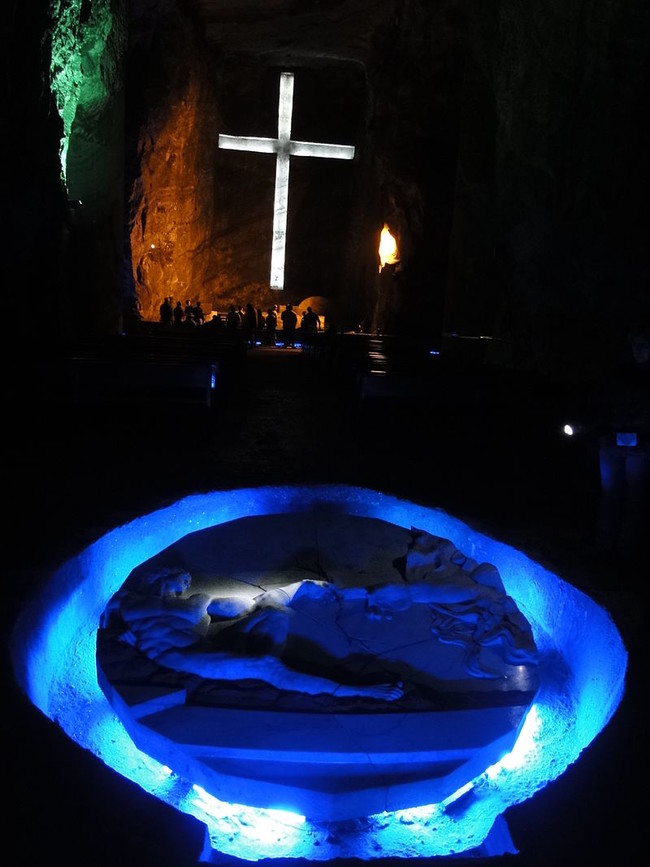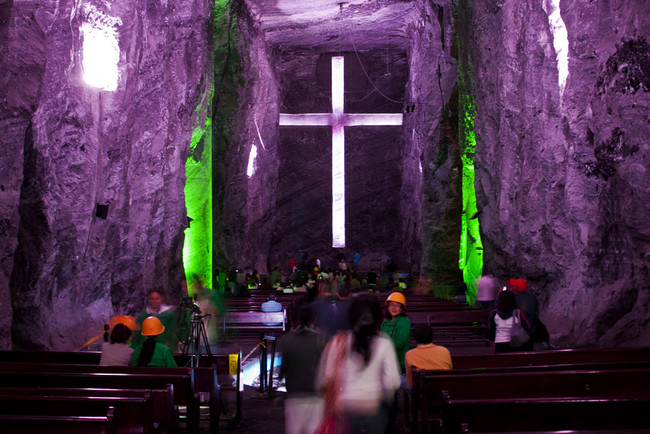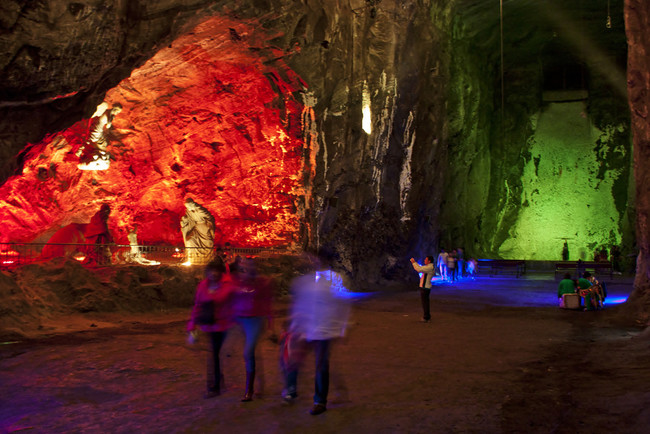Deep within the crystal caverns of a salt mine in Zipaquira, Colombia, lies something unexpected and beautiful. It’s a Roman Catholic church, carved out of the very halite (also known as rock salt) that comprises the mountain. This makes for a strange and surprisingly moving setting. The walls, floors, and ceilings are all carved from the halite, as are various statues, ornamentation, and icons.
The church first began excavation in the early 1930s, when miners carved out a small sanctuary where they could say their prayers before work. It expanded from there, and could hold some 8,000 people by 1990. It was dedicated to Our Lady of Rosary, the patron saint and protector of miners.
The original cathedral was closed in 1990. It was built on an operating mine, so there were concerns about safety. However, a new cathedral was built 200 feet under the old one due to demand, and that’s the one that’s open today. It features 14 small chapels, three naves, and a huge dome. It also has electrical generators for lighting and emergency vehicle access.
To be absolutely technical, the church can’t be called a “cathedral” because it has no bishop, but everyone still calls it the Salt Cathedral of Zipaquira.
(via Imagely)
Today, the Salt Cathedral mainly attracts tourists, but it also serves as a functioning church, and Sunday Mass can see as many as 3,000 in attendance. The cathedral is also not alone deep in the salt caverns; it’s actually part of an entire complex called the Salt Park, which includes a museum dedicated to mining, mineralogy, geology, and natural resources.
 share
share
 share
share
 share
share
 share
share
 share
share
 share
share



